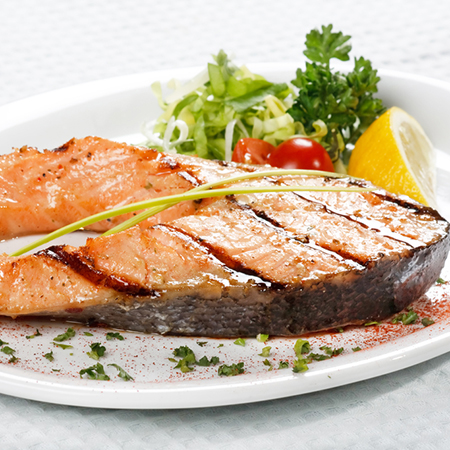What Not to Do When Cooking Fish
 Want to know why your fish never comes out right? You’re probably making one of these mistakes. If you’ve had a bad experience cooking fish, you aren’t alone. Many home cooks avoid making seafood altogether because it’s less forgiving than other meats. No one wants to eat tough, rubbery shrimp or dry, mushy fish fillets. Mastering the art of cooking fish is worth it since seafood has so many health benefits. You can say goodbye to fish recipe fails and hello to restaurant-quality seafood meals by avoiding these 5 cooking mistakes.
Want to know why your fish never comes out right? You’re probably making one of these mistakes. If you’ve had a bad experience cooking fish, you aren’t alone. Many home cooks avoid making seafood altogether because it’s less forgiving than other meats. No one wants to eat tough, rubbery shrimp or dry, mushy fish fillets. Mastering the art of cooking fish is worth it since seafood has so many health benefits. You can say goodbye to fish recipe fails and hello to restaurant-quality seafood meals by avoiding these 5 cooking mistakes.
Adding too much salt to the marinade.
Salt is an essential seasoning but adding too much to a marinade will make your fish mushy and dry.
Salt draws out moisture and breaks down protein. Since fish is more delicate than other meats, adding too much to a seafood marinade can have a big impact on the texture of your fish. You can avoid this by only adding a pinch of salt to your marinade. If the recipe calls for more salt, add it right before you place the fish in the pan.
Not patting fish dry.
When you cook fish, you want to sear the outside. This gives it a crisp, golden crust that tastes delicious and locks in moisture. It won’t sear if you haven’t pat it down with a paper towel first. Since fish is stored on ice, it has water on the outside. If you place it in the pan right away, it’ll steam instead of searing. Patting it down with a paper towel removes this water so that it can crisp up.
Neglecting to preheat the pan.
Seafood is more delicate than other meats and cooks faster. If you place it in a pan or on a grill that hasn’t been preheated, it’ll stick and cook unevenly. You can avoid this by heating the pan or grill for 3 to 5 minutes before you add the fish. Your fish fillets will sear beautifully when you add them to a preheated pan or grill.
 Handling Seafood too much.
Handling Seafood too much.
Have you had a problem with fish falling apart when you cook it or drying out? Handling it too much can cause this. Fish falls apart easily. If you break the crunchy outer layer, the juices inside will run out leaving your fish dry and tasteless. You can prevent this by only flipping the fish once when the bottom has seared nicely and a spatula slides under it easily. You also shouldn’t poke it or use prongs. This will keep the juices inside.
Overcooking Seafood.
The biggest difference between seafood and other meat is how quickly it cooks. Cooking fish for too long is the most common mistake home cooks make. Shrimp and scallops can cook in just 3 minutes (depending on the size).
Most fish fillets are done in 7 to 10 minutes. Cook times vary depending on the size of the fish or shellfish. A general rule is to measure the thickest part of the fish and cook it 2 1/2 minutes for every ¼ inch.
Tip: You can tell that shrimp is done when it looks like a C. If it looks like an O, it’s overcooked. Generally, fish is done when it looks opaque overall, but the center is slightly translucent. The simplest way to know when fish is done is to insert a meat thermometer. The internal temperature of the thickest part of the fish should be 140°F when you remove it from the heat. You should let it rest for a minute or until it reaches 145°F. If you are hungry for more information about mastering the art of cooking fish, check out our tips for making seafood your friends and family will rave about! You can also ask the seafood experts at City Fish Market. We are happy to share cooking tips with customers and help you find the right fish for a recipe. Check out our specials!


